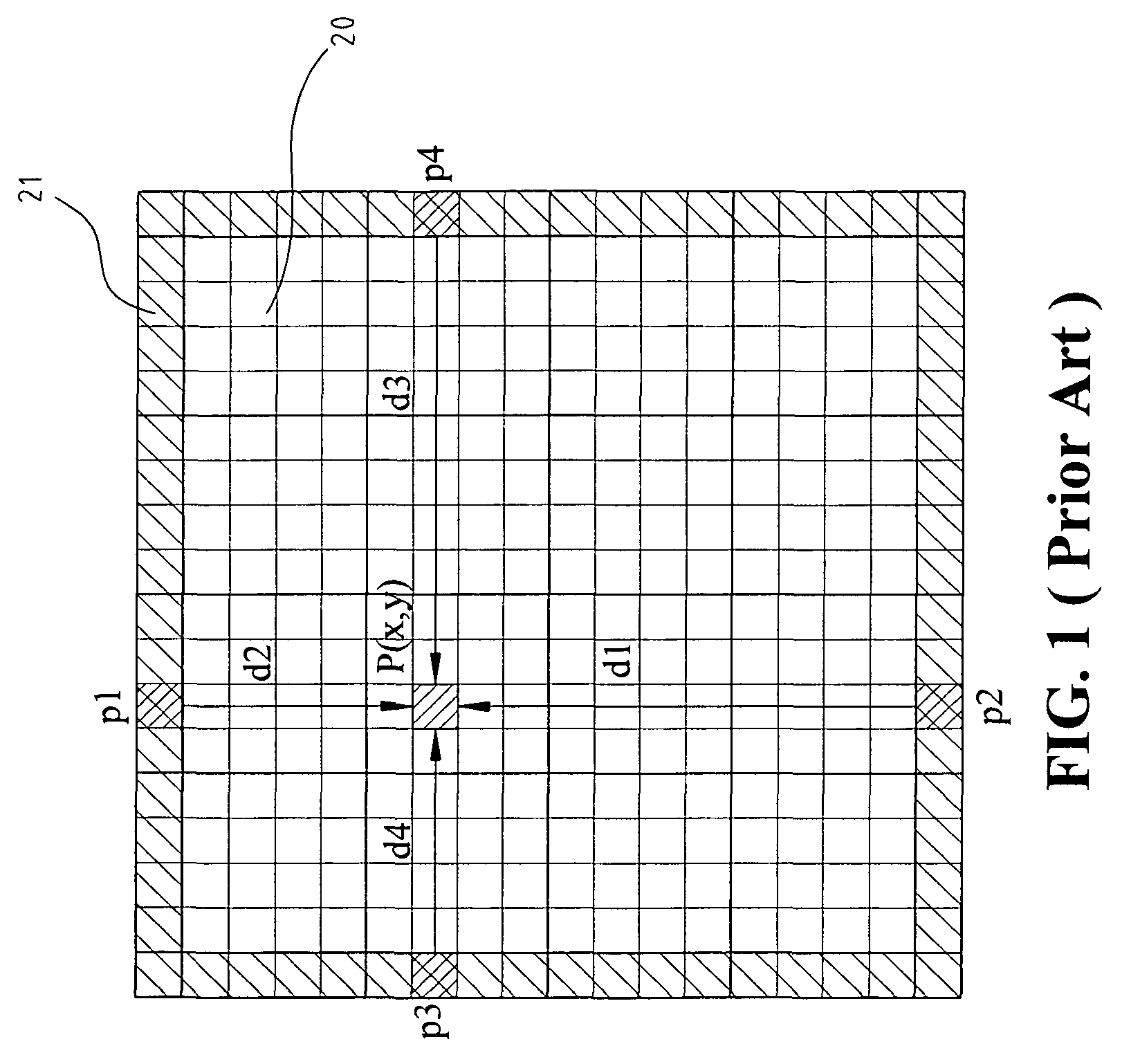Efficient adaptive mode selection technique for H.264/AVC-coded video delivery in burst-packet-loss networks
a burst-packet loss network and adaptive mode selection technology, applied in signal generators with optical-mechanical scanning, color television with bandwidth reduction, etc., can solve the problems of large memory space, often interfered encoded image files, and often too large original image files to be transmitted over the internet. , to achieve the effect of improving the overall image decoding efficiency, saving computation time, and improving image decoding performan
- Summary
- Abstract
- Description
- Claims
- Application Information
AI Technical Summary
Benefits of technology
Problems solved by technology
Method used
Image
Examples
first embodiment
[0098]Referring to FIG. 15, the method according to the present invention starts from step S230. When the decoded image frame includes a missing macroblock, at step S230, the concealment process starts, and the flow enters S240. At step S240, it is determined that whether the processed frame is the first frame, i.e., the initial frame. If the processed frame is the first frame, then the flow enters step S270, or otherwise if the processed frame is not the first frame, the flow enters step S280. At step S270, the intra high-speed SEC method is selected for recovering the missing macroblock, and then the flow enters step S260 where the decoding process ends. At step S280, it is determined whether an adjacent external boundary matching error (AEBME) is greater than a dynamic threshold (DTα). If it is determined that the AEBME is greater than the dynamic threshold (DTα), then the flow enters step S290, or otherwise, the flow enters step S300. At step S290, it is determined whether all a...
second embodiment
[0101]Referring to FIG. 16, the method according to the present invention starts from step S210, where the flow starts, then the flow enters step S220. At step S220, image data of encoded frames are decoded to generate decoded video frames, then the flow enters step S230. At step S230, it is determined that whether the decoded video frames include a missing macroblock. If it is determined that the decoded video frames include a missing macroblock, then the flow enters step S240, or otherwise, the flow enters step S250. At step S250, it is determined whether all of the frames are decoded. If it is determined that all of the frames are decoded, then the flow enters step S260, where the decoding process ends, or otherwise the flow returns back to step S220 to decoding image data of the rest frames. At step S240, it is determined that whether the processed frame is the first frame, i.e., the initial frame. If the processed frame is the first frame, then the flow enters step S270, or oth...
PUM
 Login to View More
Login to View More Abstract
Description
Claims
Application Information
 Login to View More
Login to View More - R&D
- Intellectual Property
- Life Sciences
- Materials
- Tech Scout
- Unparalleled Data Quality
- Higher Quality Content
- 60% Fewer Hallucinations
Browse by: Latest US Patents, China's latest patents, Technical Efficacy Thesaurus, Application Domain, Technology Topic, Popular Technical Reports.
© 2025 PatSnap. All rights reserved.Legal|Privacy policy|Modern Slavery Act Transparency Statement|Sitemap|About US| Contact US: help@patsnap.com



